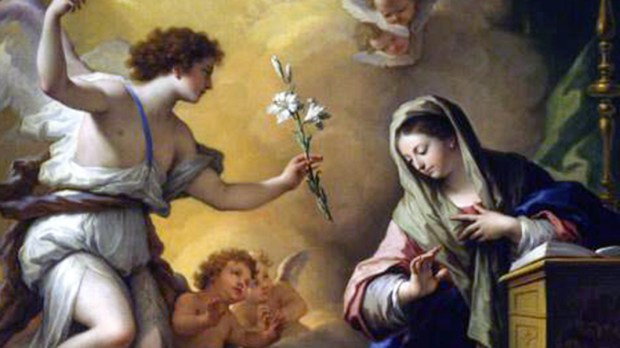The feast of the Annunciation of the Lord on March 25 is a unique feast, set in the middle of Lent. It is a feast that does not celebrate a day connected to Jesus’ death or resurrection, but to his birth.
In this way, it is more of a “Christmas feast” than an Easter one.
To help you understand this unique celebration, here are 4 fast facts about the Annunciation.
Please click the article links for more information.
Why is the Annunciation celebrated on March 25?
The Gospels do not mention the date of Jesus’ incarnation or his birth. As a result, early Christians had to fix specific days on the calendar for these celebrations, taking into account both oral and written traditions.
After careful considerations and much debate, the early Church eventually fixed the feast of the Annunciation on March 25, and this date was chosen based on Jesus’ death.
The date of March 25 for the Annunciation can be traced back to either the 3rd or 4th century and was fixed to coincide with the day Jesus died.
What does the word “Annunciation” mean?
In the Catholic Church, March 25 marks the solemnity known as the “Annunciation of the Lord.” What does that mean?
The word “annunciation” comes from how the Church names the feast day in Latin (Annuntiationem Beatae Mariae Virginis). The word annuntiationem has at its root the Latin word annuntiare, meaning “to announce.”
This word is referring to the “announcement” of the Lord’s incarnation to the Blessed Virgin Mary, as narrated in the Gospel of Luke.
How did the Holy House of Mary get to Loreto, Italy?
The Holy House of Loreto comprises three walls of stacked stones and is safeguarded beneath an ornate Renaissance-era basilica. It is believed that Mary grew up in this house and that the Annunciation took place in it.
Of course Mary’s house should be in Israel’s Galilee region. Indeed, in Nazareth today, there is another basilica – that of the Annunciation – built over a grotto where it is believed Mary grew up and was visited by the Archangel Gabriel. Today’s Nazareth basilica is the largest church in the Middle East. Testifying to the ancient and enduring belief that this was the site of Mary’s house and Annunciation are the remnants of four earlier churches within it: a 3rd-century synagogal basilica, a 5th-century Byzantine basilica, a crusader church from the 12th century, and another one built by the Franciscans in the 18th century. This last one was expanded into the current basilica, consecrated as recently as 1969.
For many centuries, tradition held that angels miraculously carried the Holy House from Nazareth to Loreto. Throughout the basilica are numerous artistic depictions of angels flying over the seas with the house.
What does “fiat” mean?
In some Latin translations of Nehemiah 8:6 the original “amen, amen” is rendered as fiat, fiat. This is an interesting translation, as the Blessed Mother’s “yes” at the Annunciation is known in Latin as her fiat. This Latin word is translated into English as “let it be done” and summarizes Mary’s humble obedience to the Word of God. In this context the word “Amen” not only affirms what was spoken, but is pledge of allegiance to God in humble submission.

Read more:
Novena prayer to Our Lady of the Annunciation

